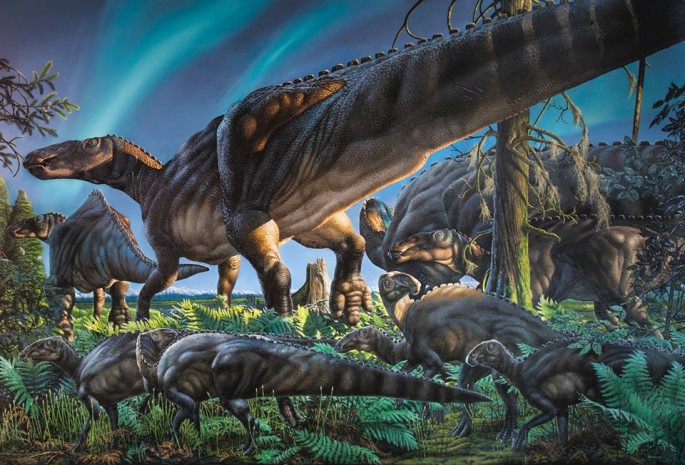Researchers have uncovered fossilized remains of a new species of dinosaur in Alaska that was apparently previously unknown, where the bones were discovered from rocks dating back to 69 million years.
This new dinosaur species is known as Ugrunaaluk kuukpikensis meaning "ancient grazer" in Inupiaq, which is the language of Inupiat native people of Alaska. This dinosaur is a type of hadrosaur, known as plant eating, duck billed dinosaurs that thrived in herds, according to scientists.
The fossils were found in northern Alaska where the climate was once warmer than today, as the region was once covered with lush forests. However, paleontologists believe that even if there was warmer climate millions of years back, these ancient animals most likely spent months in the Arctic darkness most of the time and would have also experienced snow.
Researchers were surprised to see an abundance of fossilized evidence of 10,000 bones where this species has been confused with another dinosaur species called Edmontosaurus, as the fossils were mostly common in the United States and Canada.
According to earth sciences curator of the University of Alaska Museum, Pat Druckenmiller, this new study further examined the skull and mouth features where scientists have uncovered certain differences, proving that this is a totally different dinosaur species. These differences were apparently challenging to pinpoint as all the fossils belong to juveniles, making it hard to differentiate from the Edmontosaurus remains.
The fossils were uncovered from Prince Creek Formation some 300 miles, northwest of Fairbanks, where researchers discovered that these young dinosaurs were less than nine feet long. Adults are estimated to grow up to 25 feet in length, according to researchers.
According to Druckenmiller, from this fossil evidence, it appears as if this herd of young animals were suddenly killed, wiping out a population that is similarly aged with each other in order to create this deposit.
Scientists are still figuring out if this species were cold blooded or warm blooded creatures as most believe that dinosaurs are known to thrive in tropical, warmer climates. However, 69 million years ago, average temperatures in the region of what is now known as northern Alaska would have been in the low 40s.
The team is also suggesting that in reptilian standards, it would also been chilly where the species could have evolved and adapted to withstand this cold. Researchers also noted that apart from chilly temperatures, this region is also immersed in total darkness for about three to five months in a year.
These findings are published in the journal, Acta Palaeontologica Polonica.




























